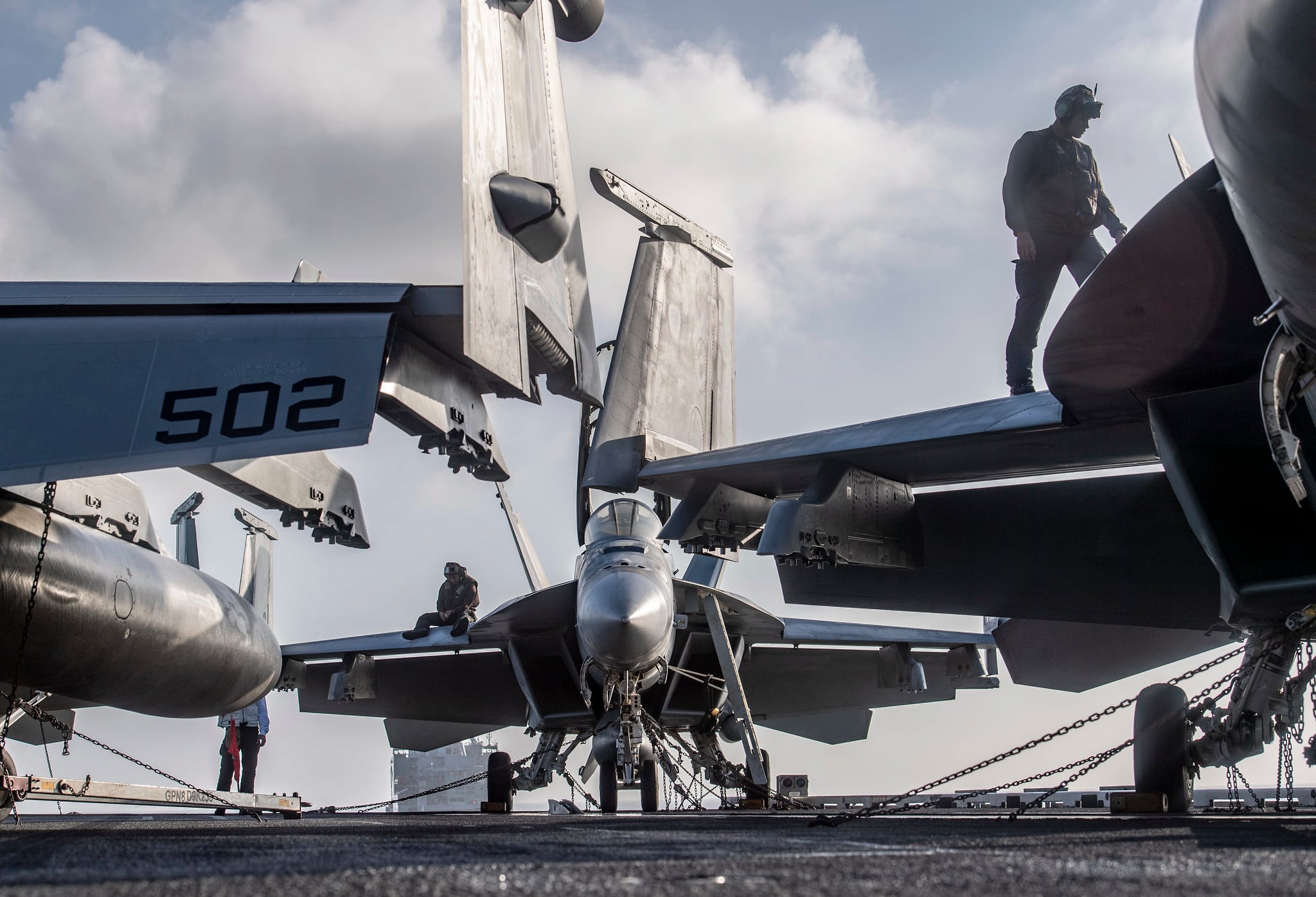The Department of the Navy spent more than $2 billion to address metal corrosion on F/A-18 Hornets and Super Hornets from fiscal 2017 to 2020, but maintainers don’t always conduct inspections that meet departmental standards, according to a new Department of Defense Inspector General report.
The Navy and Marine Corps are required to conduct inspections every 84-days to tackle issues related to corrosion, according to the report.
The report, which examined corrosion in F/A-18 Models C-G, found that maintainers at the squadron level “generally reported that they performed required 84-day inspections, completed associated maintenance actions, and implemented technical directives” to fix corrosion issues or safeguard against them.
But there were some exceptions.
The report found that Department of the Navy maintainers did not complete mandatory 84-day inspections for a percentage of the 151 aircraft sampled in FY20 (the exact number was redacted). Valid reasons for why the inspections were not completed were not provided, nor were records showing that the required inspections did happen.
The report also determined that officials overseeing squadron-level inspections and maintenance “did not always identify and correct work that did not meet the standards.”
Based on reports from contractors performing service life extensions, aircraft entering the extension process had corrosion that DON maintainers should have identified, according to the IG.
RELATED

“Ensuring that organizational-level inspections and maintenance are performed to DON standards is crucial because the DON spends billions to address corrosion on F/A-18C-G aircraft,” the report said.
Between FY17 and FY20, corrosion costs accounted for $2,086,796,553, amounting to 29.4 percent of the total maintenance cost for these aircraft.
“Furthermore, corrosion may contribute to aircraft not being mission capable,” the report said. “However, we do not know if corrosion contributed to the mission capability rates and, if so, the extent to which it contributed.”
The Navy’s F/A-18 Super Hornet did not meet its mission-capable rates any year between 2011 and 2019 — due to issues such as delays in depot maintenance, shortage of trained maintenance personnel, obsolete parts, and parts shortages and delays, according to investigators.
A Government Accountability Office report from November 2020 found that the Navy did hit 80 percent mission-capable rates at times in FY19 — following a 2018 mandate from then-Secretary of Defense James Mattis to do so — but investigators concluded that the F/A-18 Super Hornet and the EA-18G Growler did not achieve “the mission capable goal when mission capable rate data were averaged for each day in fiscal year 2019.”
The inspector general report was required by the House Armed Services Committee in the 2021 National Defense Authorization Act to ascertain whether Navy and Marine Corps officials were conducting required maintenance to catch and counter corrosion, and whether these officials executed or had plans to execute technical directives concerning corrosion on F/A-18 C-G aircraft.
RELATED

The inspector general made three recommendations:
♦ Commander, Naval Air Forces, should direct Strike Fighter Wing Atlantic, Strike Fighter Wing Pacific, and 3rd Marine Air Wing to examine cases where standard, 84-day inspections were not completed, to identify any systemic issues that were a factor, and to establish solutions for such issues.
“If no systemic problem exists, then the Commander, Naval Air Forces, should direct Wing officials to develop an internal control to ensure that 84-day inspections occur as required.”
♦ Commander, Naval Air Forces, should direct the same commands and squadrons to review aircraft that had maintenance actions open as of Dec. 1, 2020, to determine if there are systemic issues leading maintenance actions to remain uncompleted and develop appropriate solutions.
♦ Commander, Naval Air Forces, should evaluate whether actions taken to combat corrosion has led to fewer instances of corrosion-related issues, cut costs and improved readiness of operational availability or mission capability.
Responses from Commander, Naval Air Forces, concerning these recommendations were redacted in the IG report. However, the report said that recommendations one and two were marked resolved because the response “partially addressed” the recommendation. Those recommendations will remain open though, until further documentation is provided.
The last recommendation remains unresolved, according to the report, which noted that 14 technical directives related to averting corrosion issues have been issued to squadrons between 1989 and 2020. If these actions have not improved corrosion issues at the squadron level, the IG recommended that different initiatives be implemented.
“To resolve this recommendation, we request that the Commander, Naval Air Forces, provide additional comments that explain how and when the DON will measure the effectiveness of the implemented actions taken to address corrosion and determine whether these actions resulted in fewer instances of corrosion, reduced costs, or improved readiness,” the report said.




